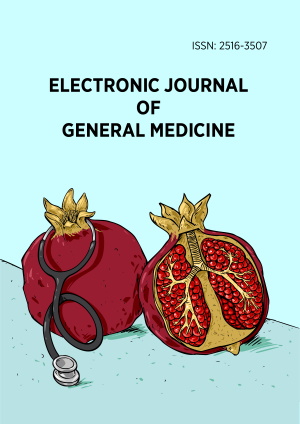Abstract
Nasopharyngeal carcinoma (NPC) is endemic to several regions of North Africa and Southeast Asia and has a striking geographic distribution. It is closely linked to the Epstein-Barr virus (EBV) and is still found at an advanced stage that permits metastasis. However, only a limited number of EBV genes, including latent membrane protein 1 (LMP1), have been identified. The 30bp deletion variant of LMP1, which is thought to be the primary EBV oncoprotein, was more prominent in NPC biopsies. The aim of this study was to employ a 30bp deletion in LMP1 as a biomarker to help clinicians diagnose NPC early, improve prognosis, and reduce mortality rate. Polymerase chain reaction (PCR) was used to detect the prevalence of EBV in patients with NPC by amplification of the EBNA-1 and LMP1 genes. β-actin was amplified in all samples as a positive PCR control. The incidence and correlation of the 30bp deletion of LMP1 in 71 paraffin-embedded NPC tissue samples from Jordanian patients (51 males and 16 females) were also evaluated. The results were confirmed by Sanger sequencing and statistically analyzed using SPSS software. EBV was detected in all 71 NPC tissue samples, with positive results for EBNA-1 gene in 58 cases (81.7%) and in combination with LMP1 with or without 30bp deletion in 69 cases (97.18%) whereas, LMP1 30bp deletion was detected in 39 samples (54.9% of all samples). Heterogeneity of mutation was observed in 14.08% of samples. No significant differences were found between the stages with regard to the LMP1 30bp deletion. Statistical analysis showed a significant association between age and LMP1 30bp deletion with p-value = 0.015, and between the source of sample with LMP1 30bp deletion p-value = 0.032, whereas there was no association between LMP1 30bp deletions and patient sex or histological NPC type. A 30bp deletion of LMP1 was found in 54.9% of NPC tissues. This is within the range reported in other studies. There was no significant association between the 30bp deletion of LMP1 and histological type or disease phase. Further research is required to determine how this mutation in LMP1 affects the course and results of patients with NPC in Jordan.
License
This is an open access article distributed under the Creative Commons Attribution License which permits unrestricted use, distribution, and reproduction in any medium, provided the original work is properly cited.
Article Type: Original Article
ELECTRON J GEN MED, Volume 22, Issue 6, December 2025, Article No: em703
https://doi.org/10.29333/ejgm/17439
Publication date: 19 Nov 2025
Article Views: 257
Article Downloads: 241
Open Access References How to cite this article
 Full Text (PDF)
Full Text (PDF)